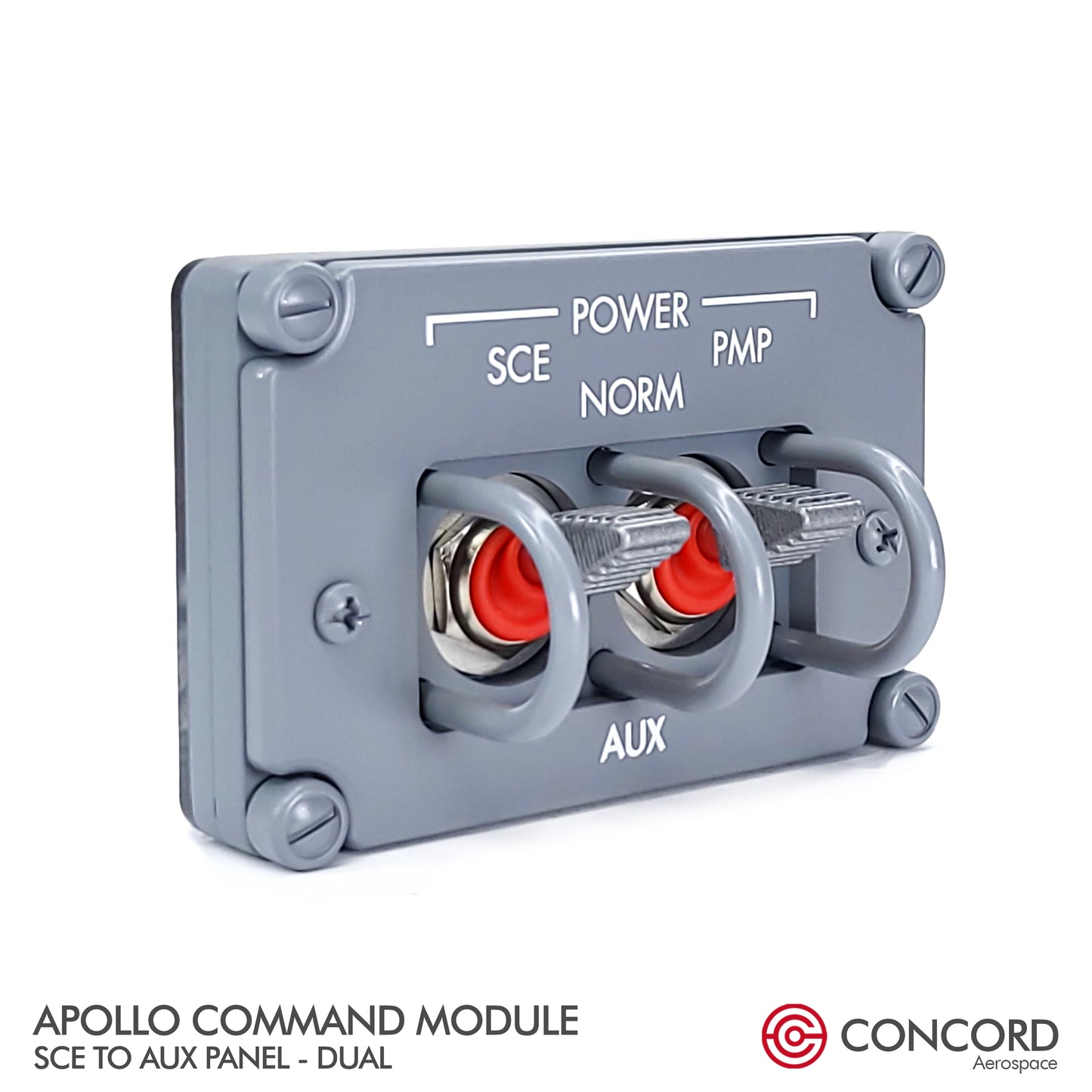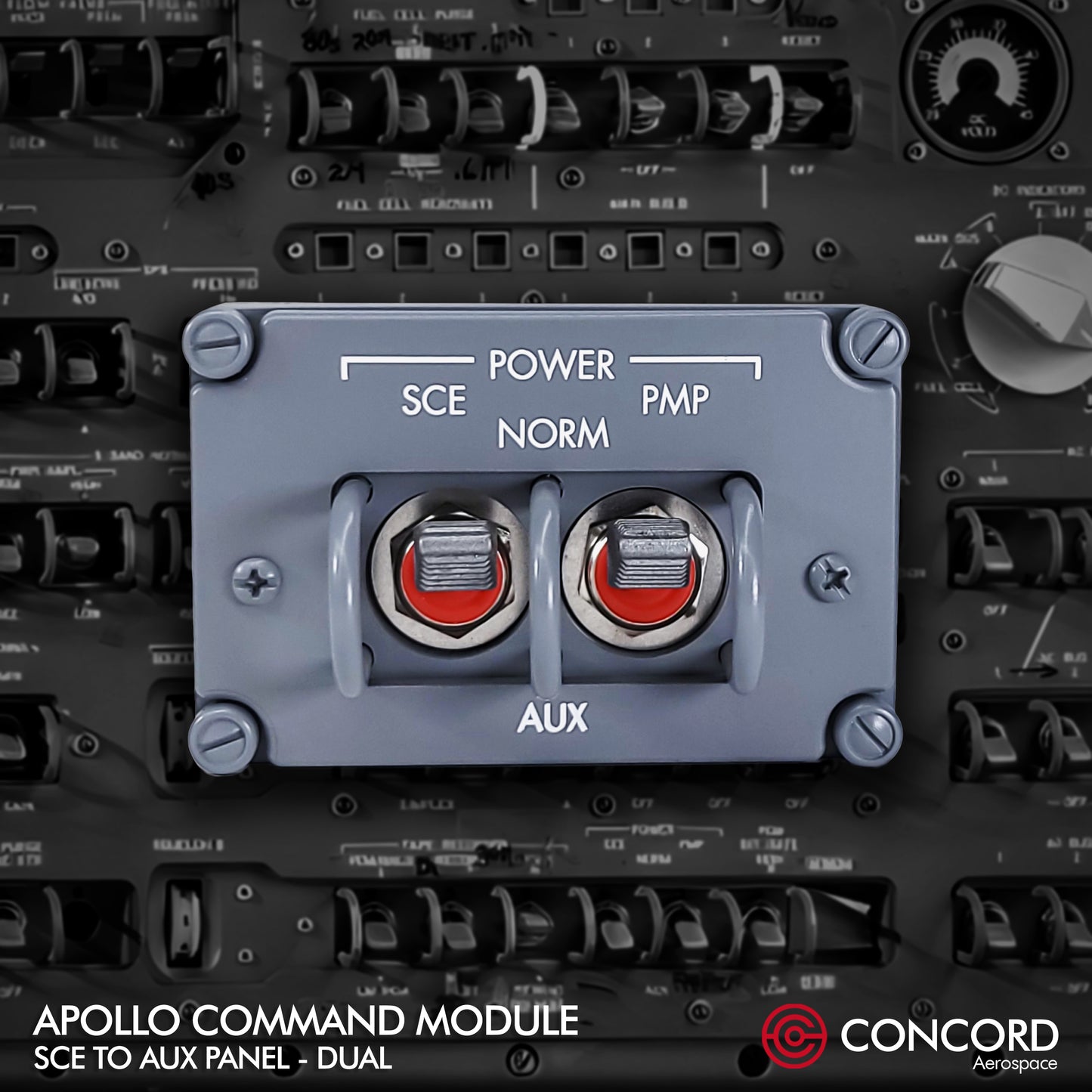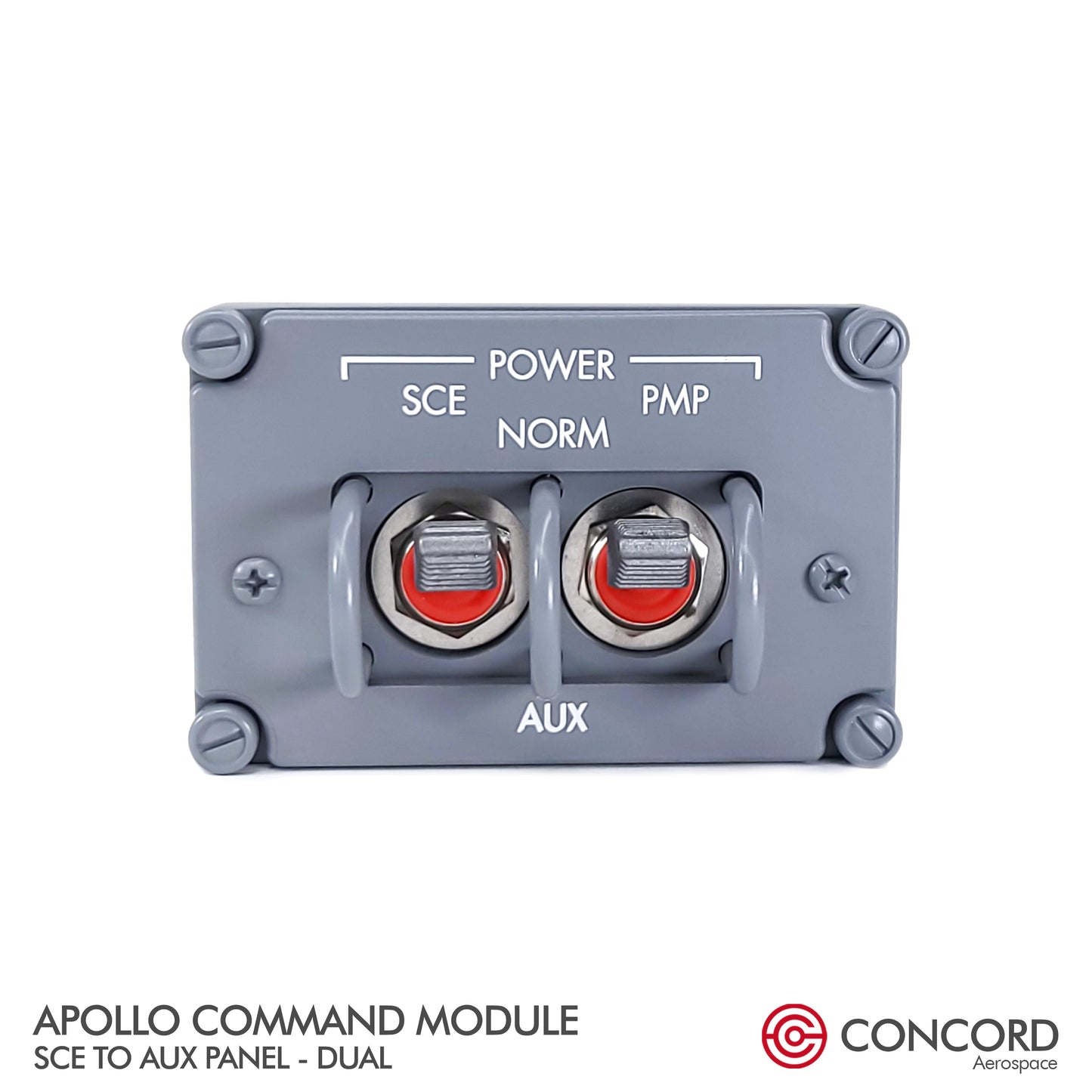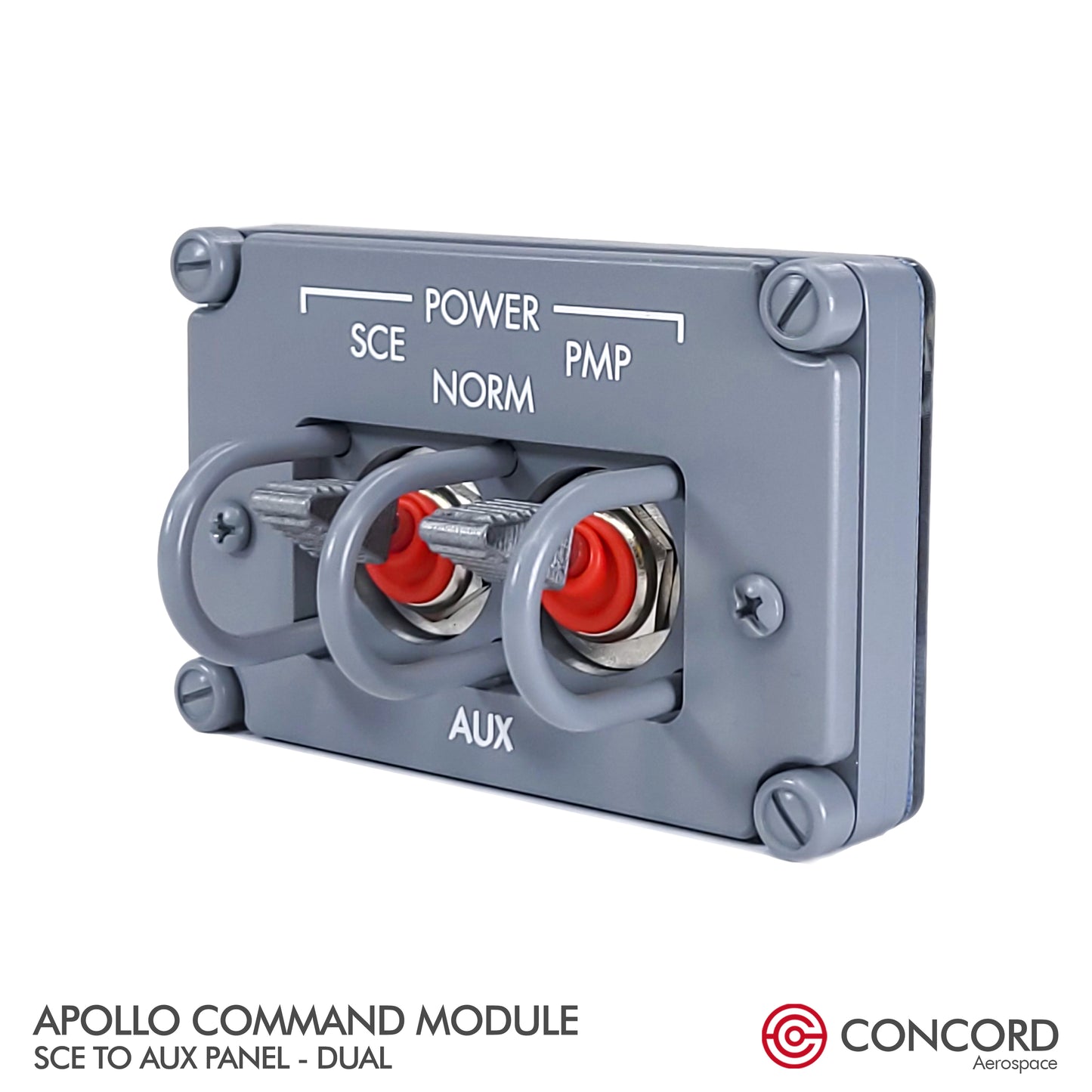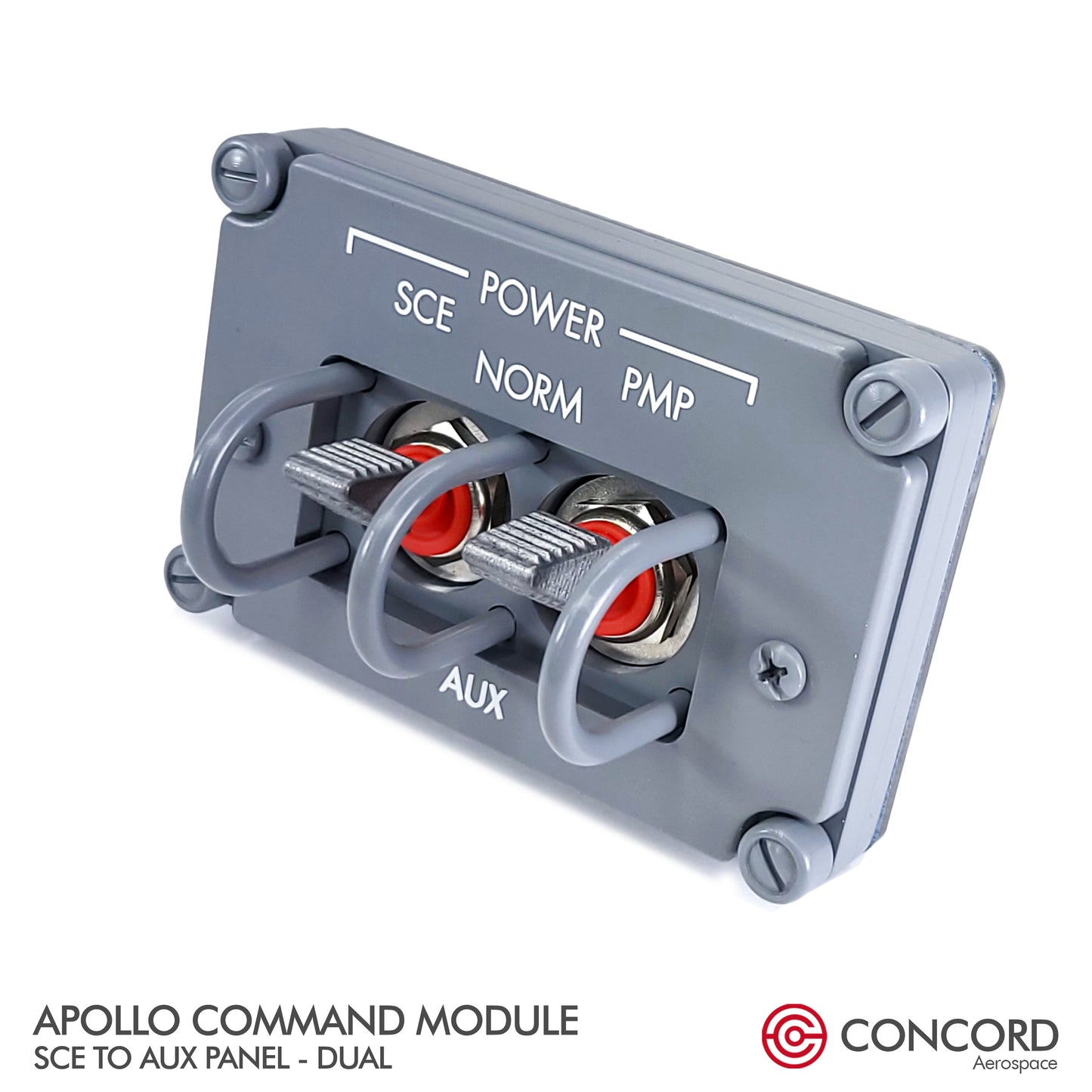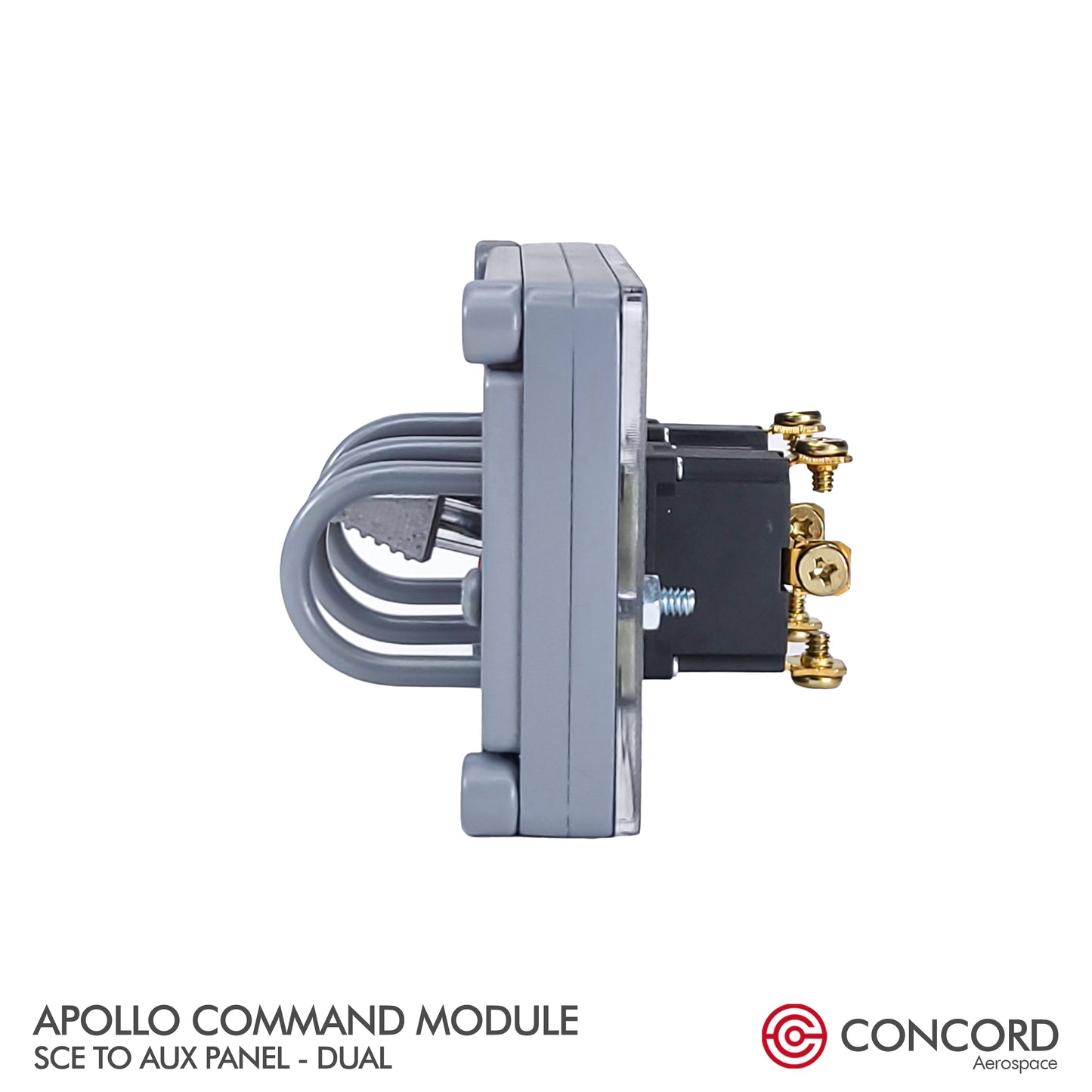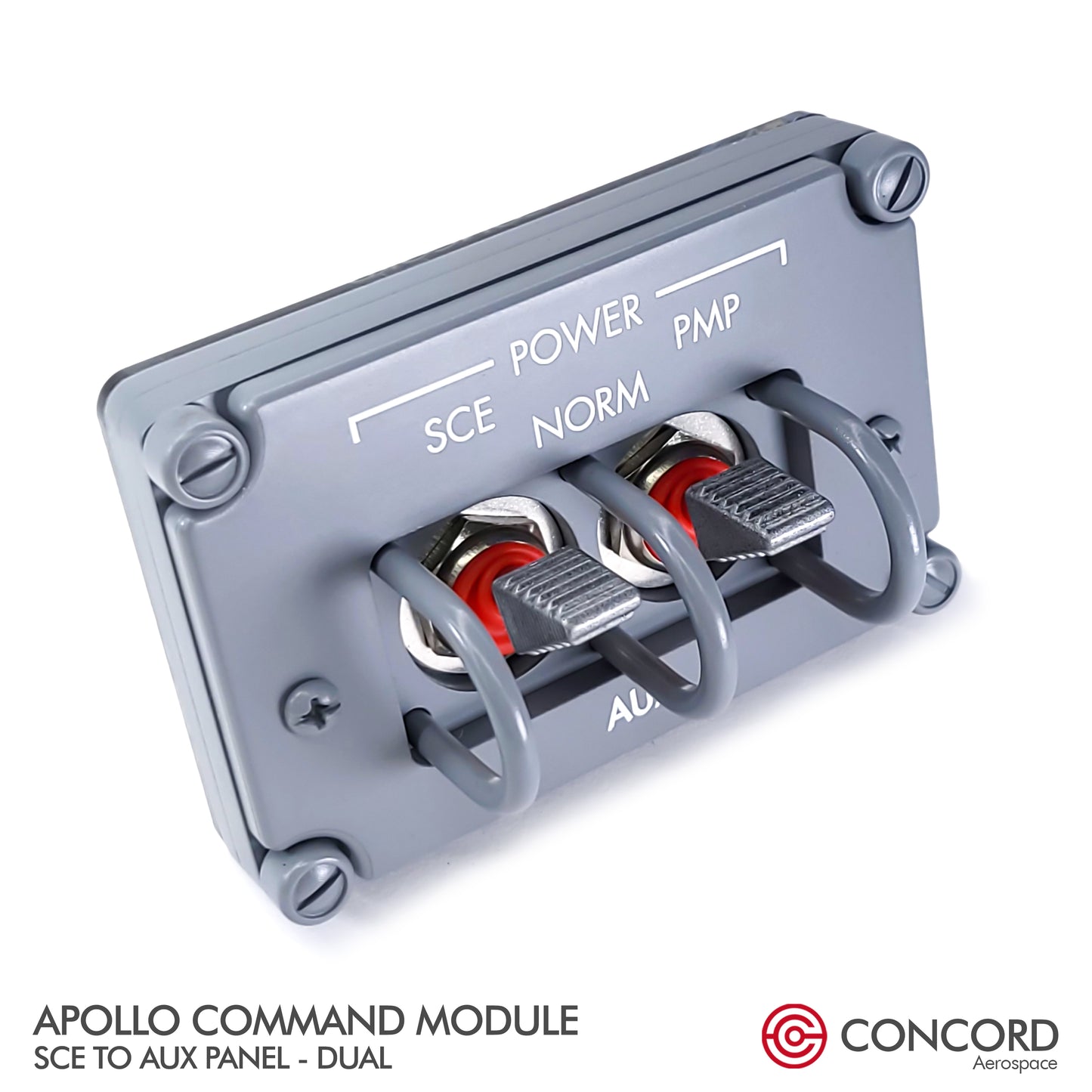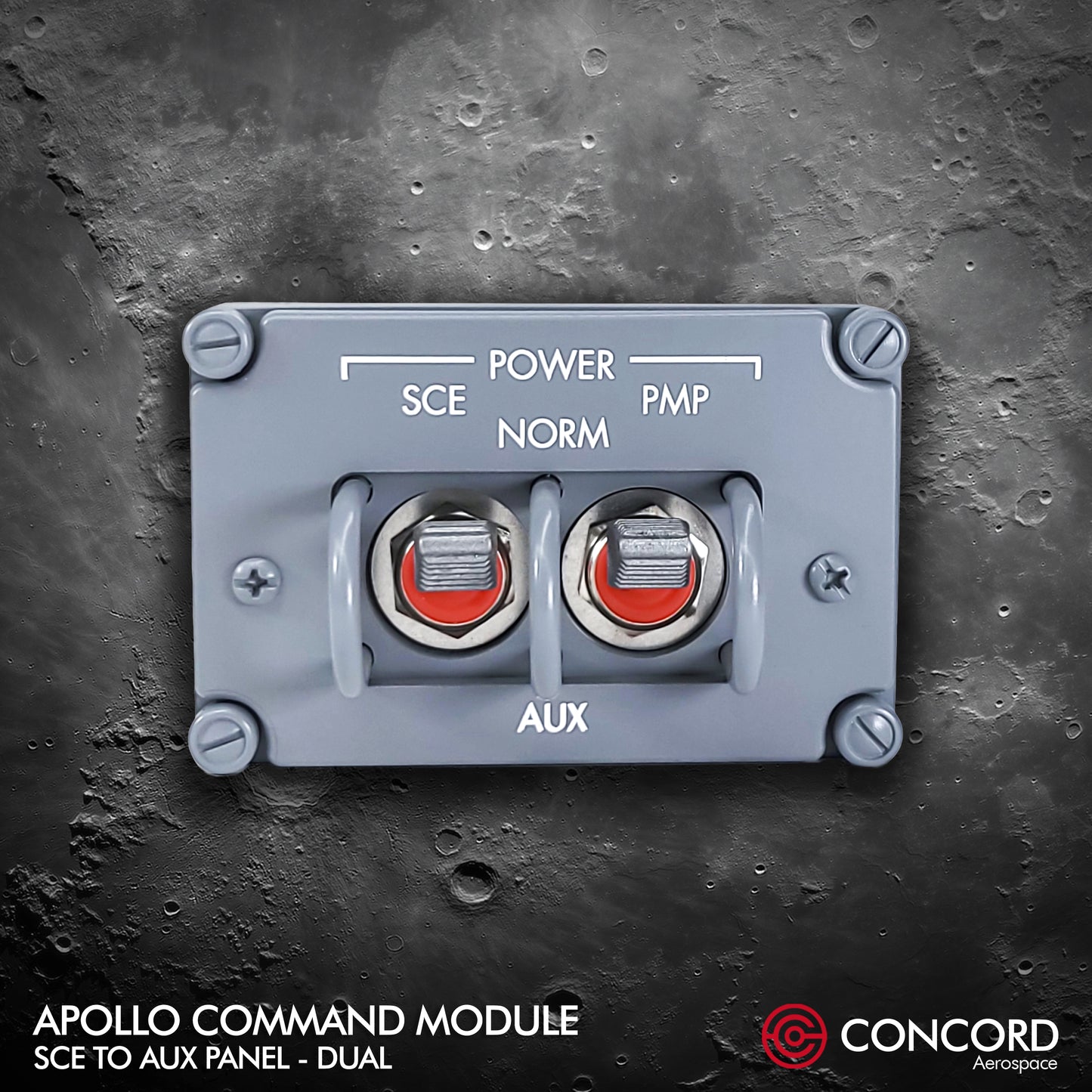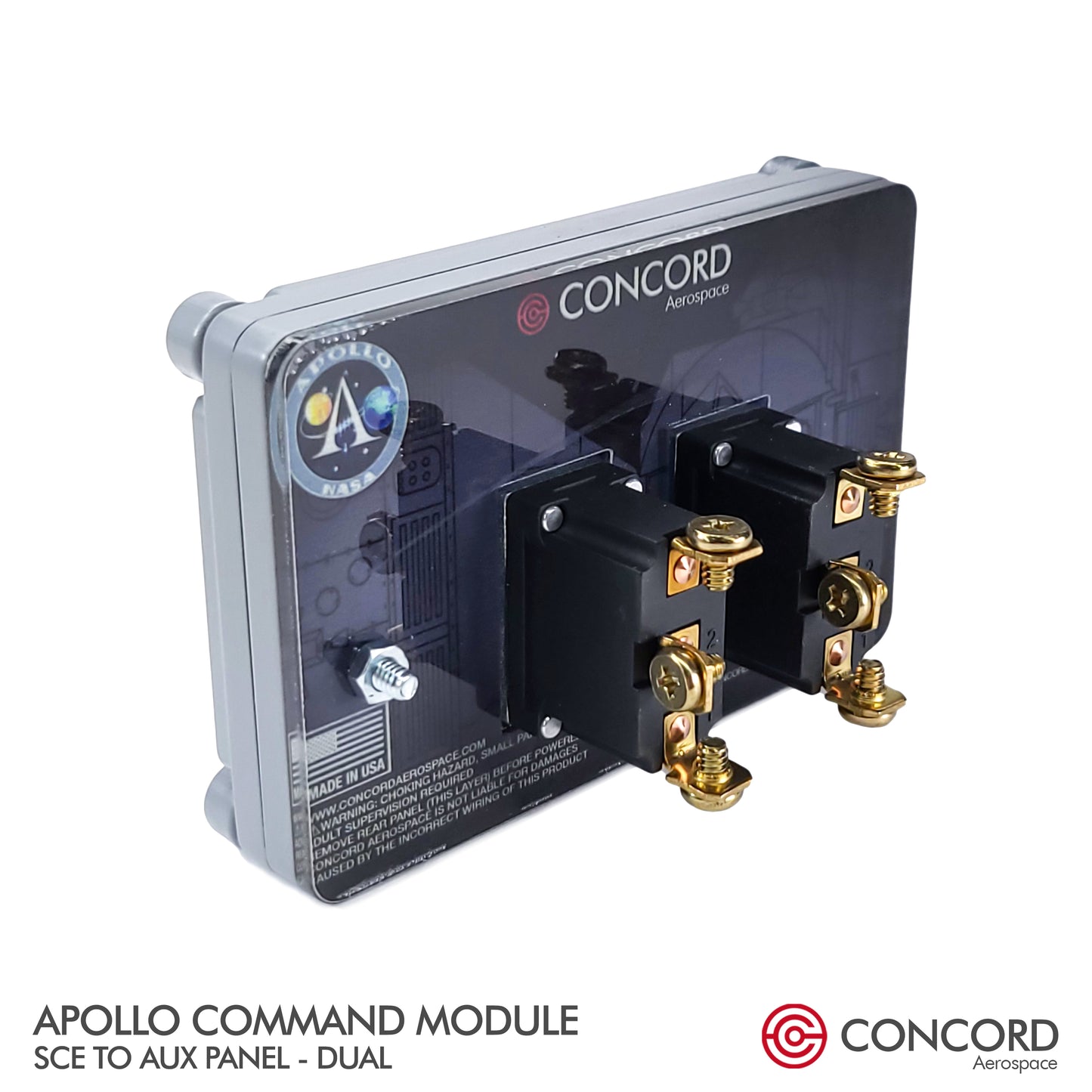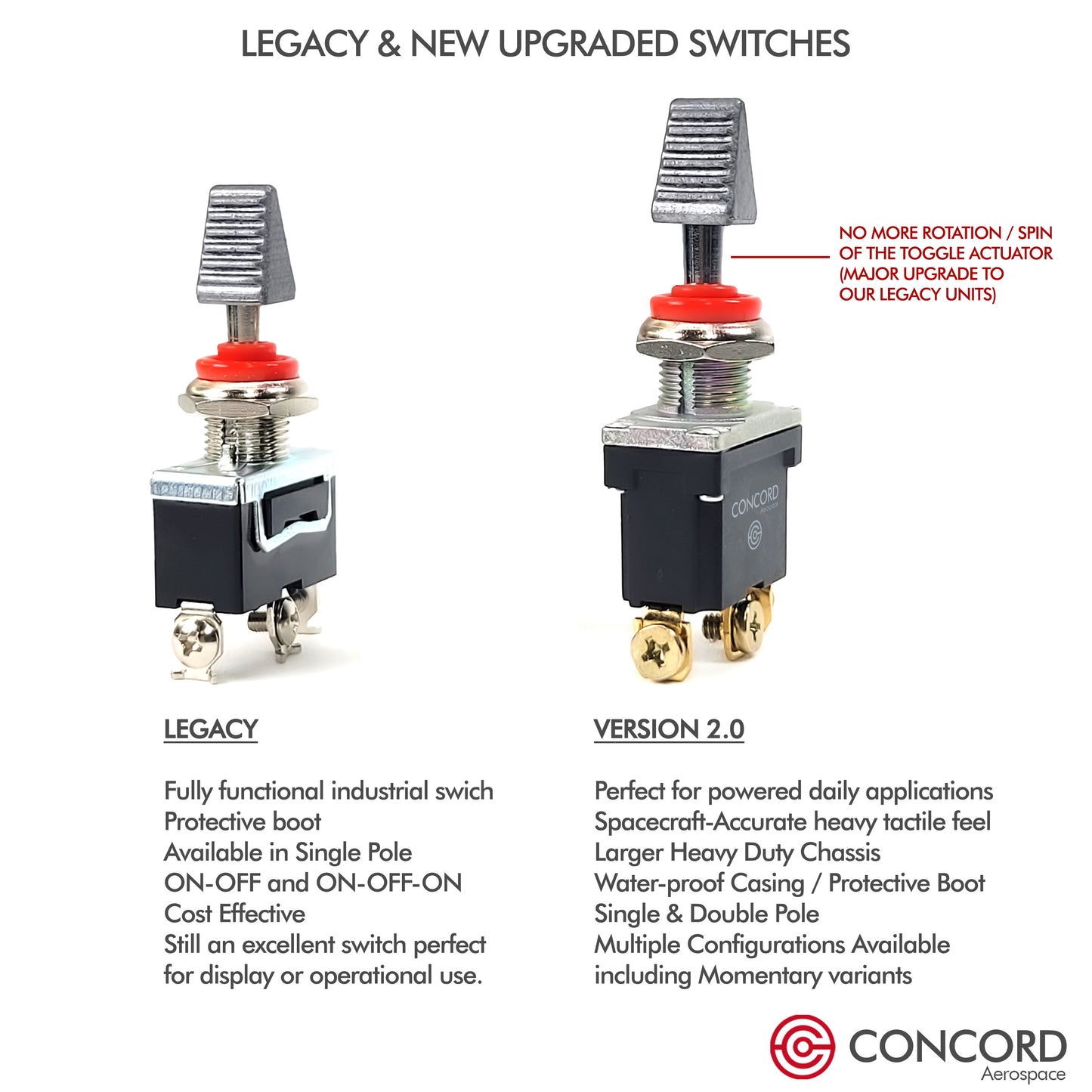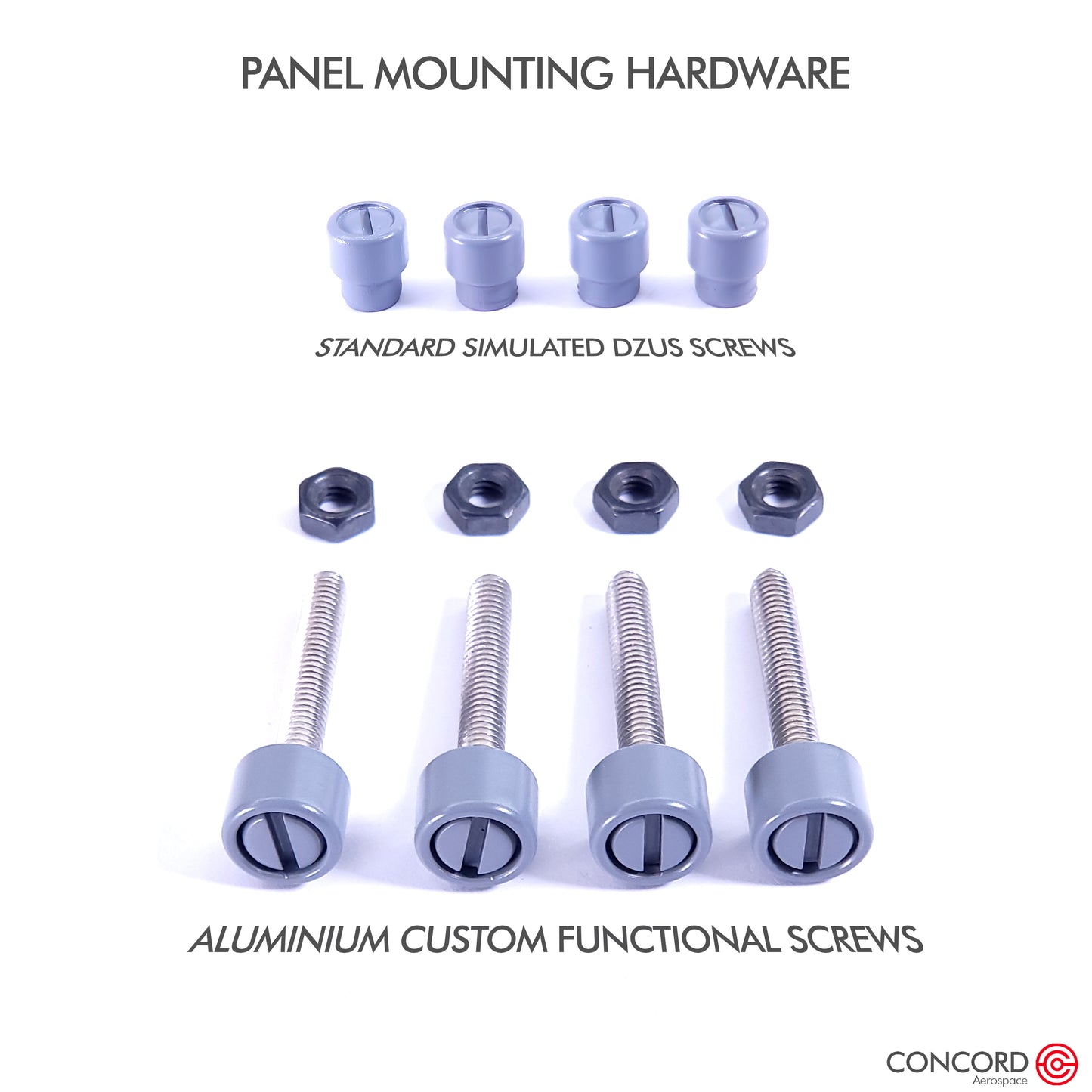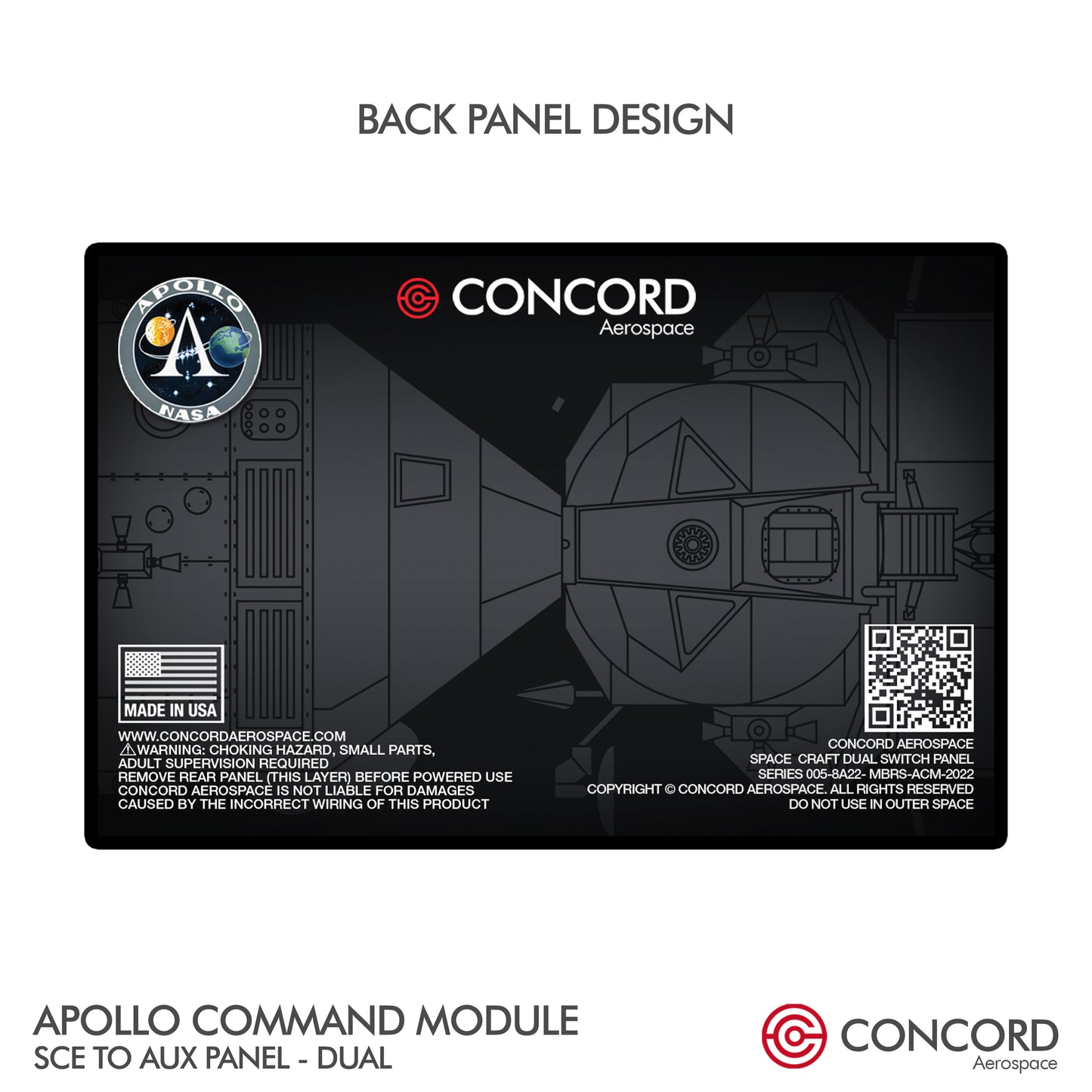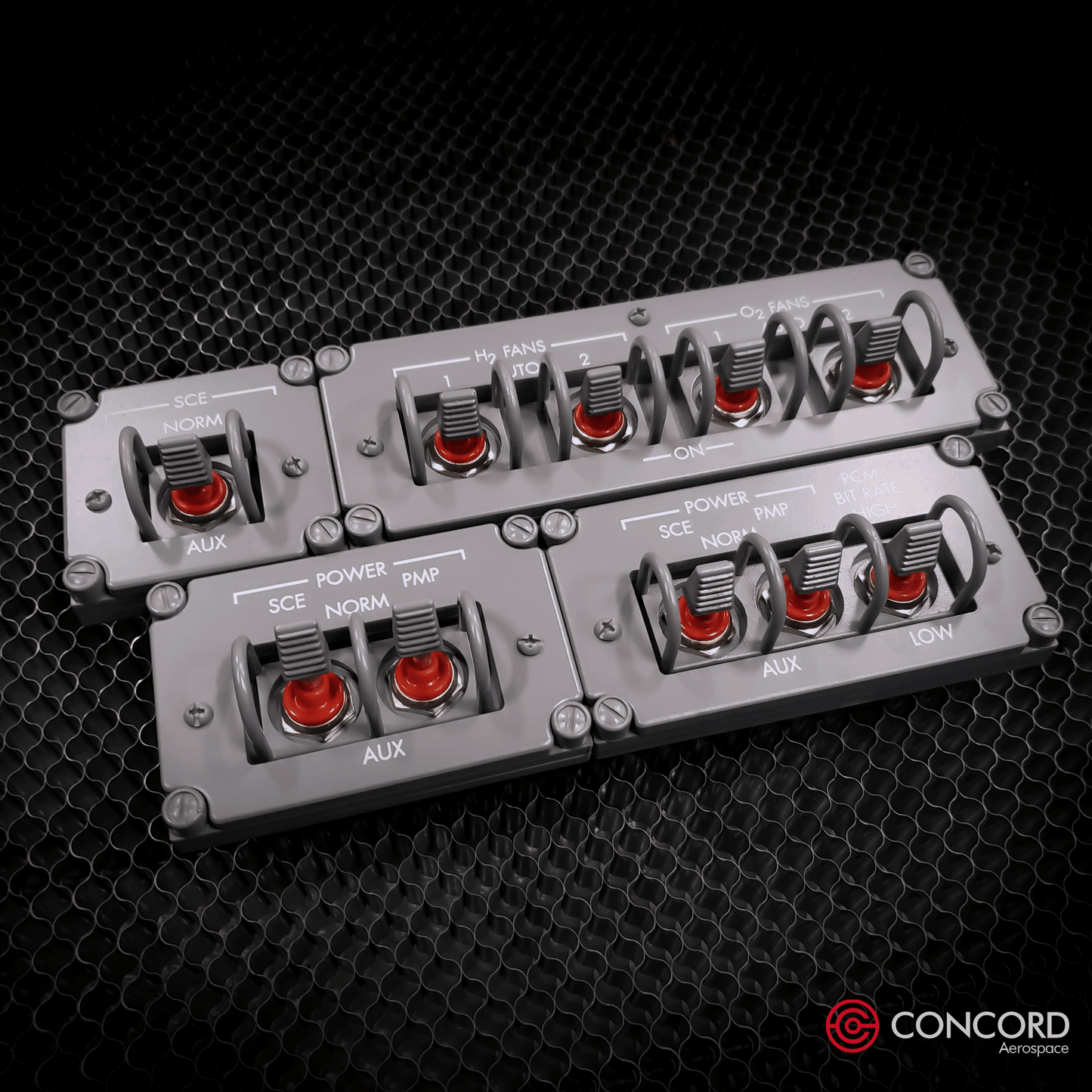APOLLO COMMAND MODULE DUAL SWITCH PANEL - SCE to AUX
APOLLO COMMAND MODULE DUAL SWITCH PANEL - SCE to AUX
Couldn't load pickup availability
APOLLO COMMAND MODULE DUAL SWITCH PANEL
NEW!!! 2 x UPGRADED INDUSTRIAL SWITCHES INCLUDED - $20+ VALUE
Introducing the Apollo Command Module Single Switch Panel - an unparalleled tribute to the iconic components that graced the Apollo missions to the moon. Crafted with meticulous attention to detail, our reproduction stands as the pinnacle of authenticity and craftsmanship.
Not merely replicas, these panels boast fully functional control switches, faithfully recreating the operational essence of the original module. Whether proudly displayed to honor humanity's journey to space or integrated into DIY projects, cars, and various ventures, these panels serve as a testament to your passion for space exploration.
These panels also make exceptional gifts for space enthusiasts and collectors, offering a unique and cherished piece of space history. Each unit is meticulously constructed using the same rigorous processes and top-grade materials employed in producing the original Command Module components, which evolved into the current Boeing and Airbus aircraft panels, establishing them as robust industrial control units. Elevate your space-themed endeavors with this exceptional piece of engineering designed to meet the highest standards of quality and precision.
TECHNICAL DETAILS:
🌕 Multi-layer switch assembly for optimal performance.
🌕 NEW UPGRADED INDUSTRIAL SWITCHES - WATERPROOF
🌕 2 X Robust, operable toggle switch (20A-125VAC / 15A-250VAC) for reliability under demanding conditions.
🌕 SPDT (ON-OFF-ON) Switch Configuration for versatile control options.
🌕 Precisely sized switch guards and bezels ensure a true-to-life representation.
🌕 Custom-crafted toggle red switch boots for a distinctive touch.
🌕 Reproduction DZUS for heightened visual authenticity.
🌕 New Mounting Kit upgrade add-on for easy installation.
🌕 Compact dimensions of 4" x 3" x 3" for seamless integration into any setting.
🌕 Designed and manufactured in Orlando, FL, USA.
SCE to AUX HISTORY:
On November 14, 1969, Apollo 12 successfully launched to the Moon. But it wasn’t without a little drama. The weather that day at Cape Canaveral in Florida was overcast with light rain and winds, but at 11:22 am EST, the spacecraft, carrying astronauts Pete Conrad, Dick Gordon, and Alan Bean, blasted off into the clouds. Thirty-seven seconds into launch, all hell broke loose.
“What the hell was that?” asked Gordon. Twenty seconds of confusion ensued, and then another disturbance occurred.
“Okay, we just lost the platform gang,” reported Conrad, “I don’t know what happened here. We had everything in the world drop out.”
The crew and Mission Control didn’t know what had happened, and only later determined the Saturn V rocket had been struck by lighting – twice.
Were it not for flight controller John Aaron, the mission might have been aborted. Aaron may be remembered more for being instrumental in helping to save Apollo 13, but the part he played in Apollo 12 was just as crucial.
When he saw the unusual telemetry readings from Apollo 12, he remembered a flight simulation that took place about a year earlier, where similar telemetry showed up. He recalled this simulated anomaly concerned an obscure system called Signal Conditioning Equipment (SCE), and remembered normal readings were restored by putting the SCE on its auxiliary setting, which meant that it would run even under low-voltage conditions.
So when he quickly called out the recommendation, “Flight, try SCE to ‘AUX'”, most of his mission control colleagues had no idea what he was talking about. Both the flight director and the CapCom asked him to repeat the recommendation. Pete Conrad’s response to the order was, “What the hell is that?”
Fortunately Alan Bean was familiar with the location of the SCE switch inside the capsule, and flipped it to auxiliary. Telemetry was immediately restored, allowing the mission to continue.
This was just one instance that earned Aaron the compliment of being called a “steely-eyed missile man,” the absolute highest of NASA compliments. And even today — among us geeks — the phrase “SCE to AUX” used to describe a situation where one narrowly averts a catastrophe by coming up with an ingenious plan.
DISCLAIMER
By accessing, purchasing or utilizing any product & services provided by Concord Aerospace, the client acknowledges and accepts that such utilization is subject to the client's own judgment and at their own risk. The client fully assumes all responsibilities for any installation, maintenance or use of these products. The client understands that any installation or use of these products may pose risks, including but not limited to the risk of electrical shock, injury, or damage to equipment and the installation environment. In applications that require power, it is recommended that a professional installation be carried out to minimize any risks of injury or damage resulting from improper installation or use of all Concord Aerospace products.
SHARE APOLLO COMMAND MODULE DUAL SWITCH PANEL - SCE to AUX
